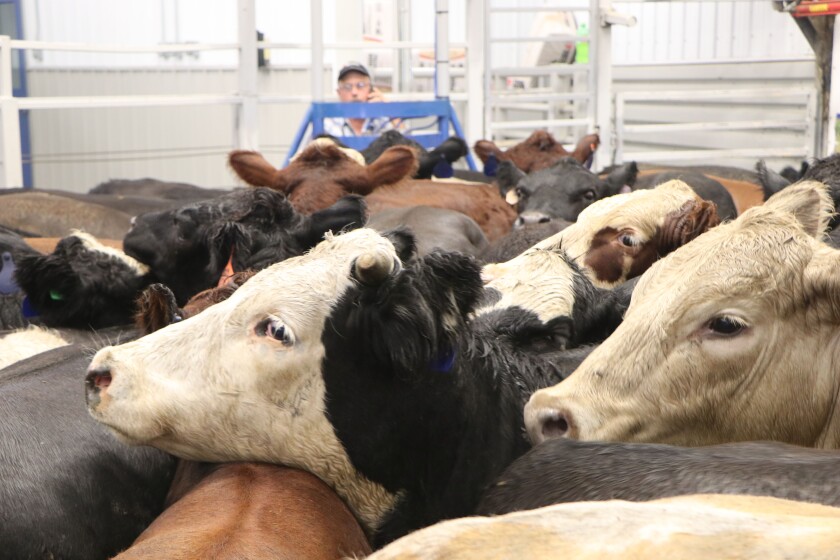Bagley Risk Management Solutions: Your Guard Against Uncertainty
Bagley Risk Management Solutions: Your Guard Against Uncertainty
Blog Article
Understanding Livestock Threat Security (LRP) Insurance Coverage: A Comprehensive Overview
Navigating the world of livestock threat protection (LRP) insurance can be a complicated endeavor for many in the farming sector. This kind of insurance policy provides a safeguard versus market variations and unforeseen scenarios that might impact livestock producers. By recognizing the complexities of LRP insurance policy, producers can make informed decisions that might secure their procedures from monetary dangers. From exactly how LRP insurance works to the numerous coverage options offered, there is much to discover in this detailed overview that can potentially shape the way animals producers come close to risk management in their businesses.

Exactly How LRP Insurance Functions
Sometimes, recognizing the technicians of Livestock Threat Defense (LRP) insurance policy can be complicated, however breaking down just how it works can give clarity for farmers and herdsmans. LRP insurance policy is a threat monitoring device created to secure livestock manufacturers versus unexpected cost decreases. It's crucial to note that LRP insurance coverage is not a profits guarantee; rather, it focuses entirely on rate risk protection.
Eligibility and Protection Options

When it comes to protection alternatives, LRP insurance uses producers the flexibility to pick the protection level, coverage duration, and recommendations that ideal fit their risk monitoring requirements. By comprehending the eligibility standards and coverage choices readily available, livestock producers can make educated decisions to manage risk properly.
Benefits And Drawbacks of LRP Insurance Coverage
When examining Animals Risk Protection (LRP) insurance, it is vital for livestock producers to evaluate the downsides and advantages inherent in this danger management device.

Among the primary advantages of LRP insurance coverage is its capability to supply protection against a decrease in livestock rates. This can assist protect manufacturers from economic losses arising from market fluctuations. Furthermore, LRP insurance coverage uses a degree of versatility, allowing producers to customize insurance coverage levels and plan durations to match their certain needs. By securing a guaranteed price for their animals, producers can much better manage danger and strategy for the future.
Nonetheless, there are likewise some downsides to think about. One restriction of LRP insurance policy is that it does not secure versus all sorts of risks, such as condition break outs or all-natural calamities. Moreover, costs can often be pricey, especially for manufacturers with huge livestock herds. It is vital for manufacturers to very carefully examine their specific risk exposure and economic scenario to identify if LRP insurance coverage is the right danger administration tool for their procedure.
Comprehending LRP Insurance Policy Premiums

Tips for Taking Full Advantage Of LRP Perks
Optimizing the advantages of Animals Danger Protection (LRP) insurance needs critical planning and proactive danger monitoring - Bagley Risk Management. To make the most of your LRP insurance coverage, take into consideration the following pointers:
On A Regular Basis Examine Market Conditions: Stay notified Source regarding market trends and price fluctuations in the animals industry. By monitoring these factors, you can make educated decisions about when to buy LRP coverage to shield versus prospective losses.
Establish Realistic Protection Degrees: When choosing insurance coverage levels, consider your manufacturing costs, market worth of animals, and prospective dangers - Bagley Risk Management. Establishing realistic coverage levels makes certain that you are appropriately secured without overpaying for unnecessary insurance coverage
Diversify Your Insurance Coverage: Rather than counting entirely on LRP insurance coverage, consider expanding your threat management strategies. Incorporating LRP with various other risk monitoring tools such as futures agreements or options can provide detailed insurance coverage against market uncertainties.
Testimonial and Adjust Protection Frequently: As market problems alter, periodically evaluate your LRP protection to guarantee it aligns with your current threat exposure. Adjusting insurance coverage degrees and timing of purchases can assist maximize your threat defense approach. By complying with these pointers, you can optimize the benefits of LRP insurance policy and secure your animals procedure against unanticipated risks.
Conclusion
To conclude, animals threat protection (LRP) insurance coverage is a useful tool for farmers to manage the financial dangers related to their animals procedures. By recognizing exactly how LRP works, eligibility and coverage options, in addition to the benefits and drawbacks of this insurance coverage, farmers can make educated decisions to shield find out here their incomes. By very carefully thinking about LRP costs and implementing methods to make best use of advantages, farmers can reduce prospective losses and ensure the sustainability of their procedures.
Livestock manufacturers interested in getting Livestock Danger Protection (LRP) insurance policy can check out a range of eligibility requirements and protection alternatives customized to their certain animals procedures.When it comes to insurance coverage alternatives, LRP insurance policy uses manufacturers the adaptability to pick the protection level, protection period, and endorsements that finest suit their danger monitoring requirements.To understand the ins and outs of Animals Risk Defense (LRP) insurance policy fully, comprehending the variables influencing LRP insurance coverage premiums is vital. LRP insurance costs are identified by various components, consisting of the coverage degree chosen, the anticipated rate of livestock at the end of the insurance coverage period, the kind of livestock being guaranteed, and the length of the protection duration.Evaluation and Adjust Insurance Coverage On Clicking Here a regular basis: As market problems alter, periodically examine your LRP insurance coverage to ensure it aligns with your existing danger exposure.
Report this page